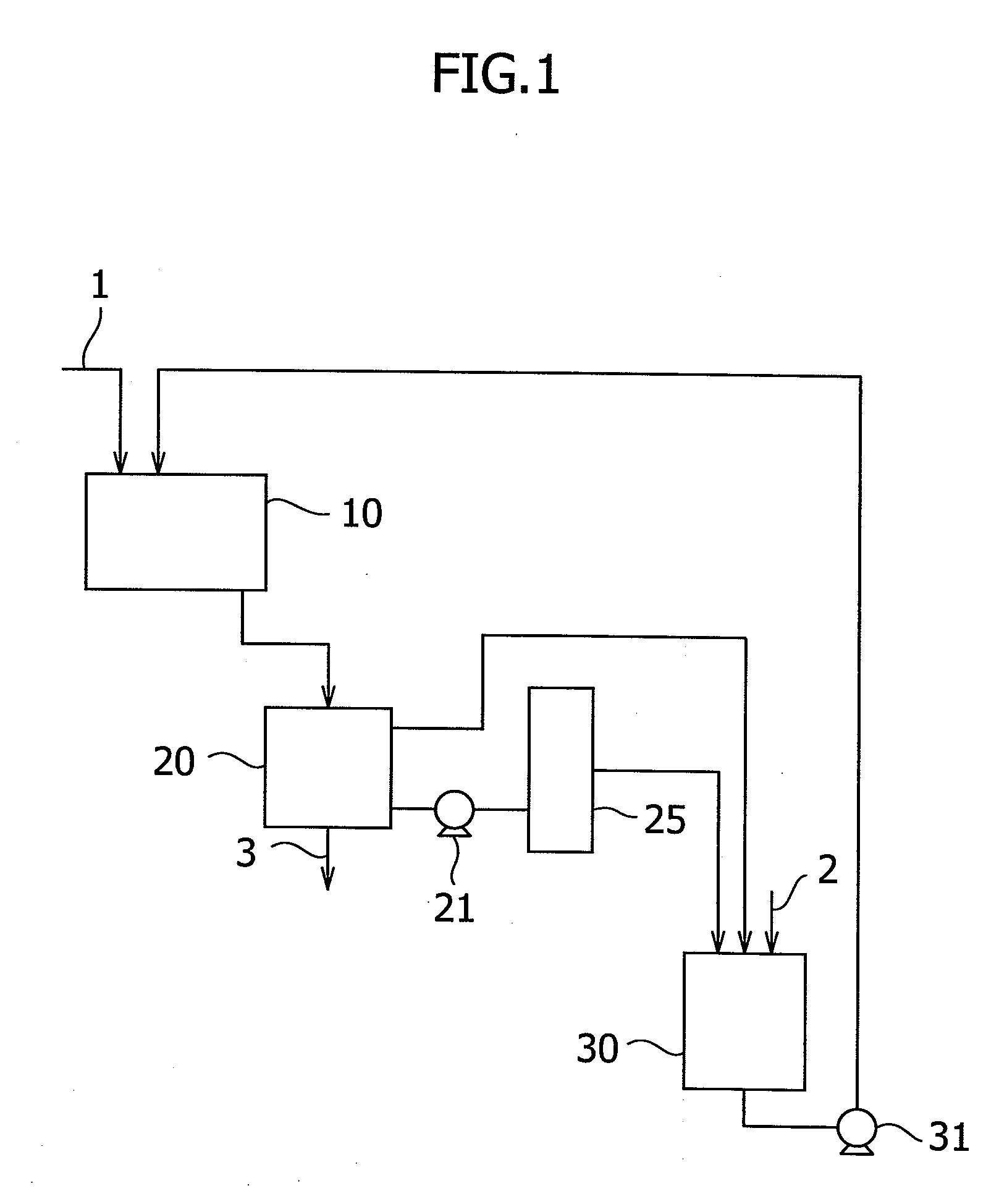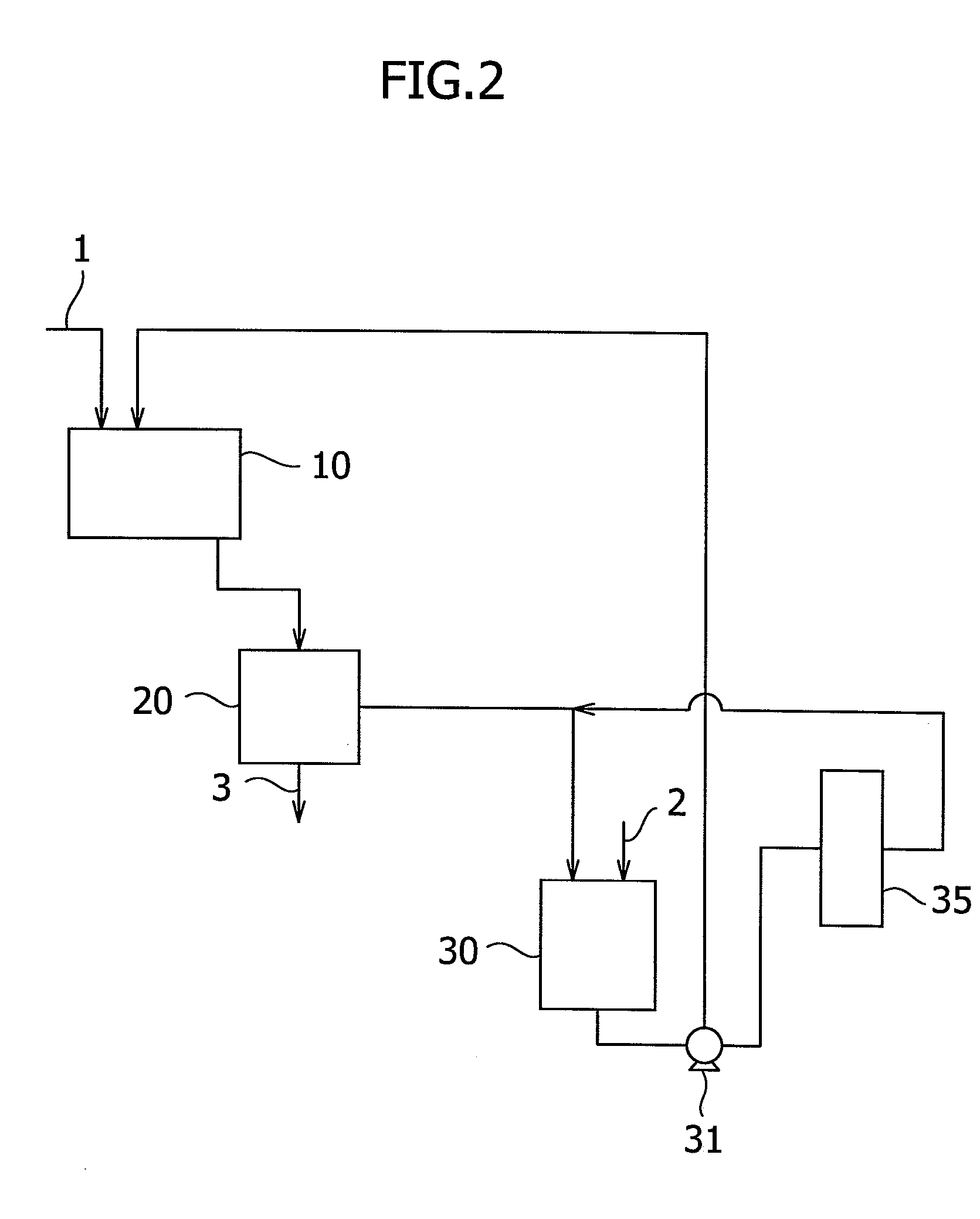Methods for preparing alkali cellulose and cellulose ether
- Summary
- Abstract
- Description
- Claims
- Application Information
AI Technical Summary
Benefits of technology
Problems solved by technology
Method used
Image
Examples
example 1
[0080] A pipe having an inner diameter of 38 mm and length of 10 m was installed. A snake pump (“NVL40PL”, supplied by Heishin, Ltd.) equipped with a hopper was connected to the inlet of the pipe. In the hopper of the snake pump, a 23 wt % aqueous sodium hydroxide solution of 40° C. was supplied at a rate of 900 L / hr. At the same time, 4-mm square pulp chips produced by wood and having a solid concentration of 93 wt % were charged at a rate of 50 kg / hr in the hopper. The outlet of the pipe was connected to a screw discharge type continuous rotating basket. A mixture of the pulp chips and the sodium hydroxide solution discharged from the pipe was drained continuously at a centrifugal effect of 1150. The weight ratio of the alkali metal hydroxide contained by the resulting alkali cellulose to the solid portion contained by the pulp, which was determined by the titration method, was 1.25.
[0081] The alkali cellulose (5.5 kg in terms of a cellulose content) thus obtained was placed in a...
example 2
[0082] In a similar manner to Example 1 except that a 30 wt % aqueous sodium hydroxide solution of 40° C. was fed at a rate of 1,300 L / hr, alkali cellulose was obtained. The weight ratio of the alkali metal hydroxide contained by the resulting alkali cellulose to the solid portion contained by the pulp, which was determined by the titration method, was 1.25.
[0083] In a similar manner to Example 1, cellulose ether was prepared using the alkali cellulose thus obtained. The viscosity at 20° C. of a 2 wt % aqueous solution of the resulting cellulose ether and the light transmittance at 20° C. of a 2 wt % aqueous solution thereof are shown in Table 1.
example 3
[0084] A screw conveyor having a screw diameter of 154 mm, a shaft diameter of 90 mm, a screw length of 1,500 mm and a screw pitch of 100 mm was installed and rotated at 30 rpm. Pulp chips similar to those employed in Example 1 were charged in a screw-conveyor type immersion tank at a rate of 50 kg / hr. At the same time, a 40 wt % aqueous sodium hydroxide solution of 40° C. was supplied from the supply port of sodium hydroxide at a rate of 1,700 L / hr. As a continuous centrifugal separator, an extrusion plate type centrifugal dehydrator equipped with a 0.2 mm slit screen was installed at the outlet of the screw conveyor type immersion tank. A contact mixture of pulp chips and the sodium hydroxide solution discharged from the screw conveyor type immersion tank was continuously drained at a centrifugal effect of 1,000. The weight ratio of the alkali metal hydroxide contained by the resulting alkali cellulose to the solid portion contained by the pulp, which was determined by the titrati...
PUM
| Property | Measurement | Unit |
|---|---|---|
| Percent by mass | aaaaa | aaaaa |
| Angle | aaaaa | aaaaa |
| Angle | aaaaa | aaaaa |
Abstract
Description
Claims
Application Information
 Login to View More
Login to View More - R&D
- Intellectual Property
- Life Sciences
- Materials
- Tech Scout
- Unparalleled Data Quality
- Higher Quality Content
- 60% Fewer Hallucinations
Browse by: Latest US Patents, China's latest patents, Technical Efficacy Thesaurus, Application Domain, Technology Topic, Popular Technical Reports.
© 2025 PatSnap. All rights reserved.Legal|Privacy policy|Modern Slavery Act Transparency Statement|Sitemap|About US| Contact US: help@patsnap.com


